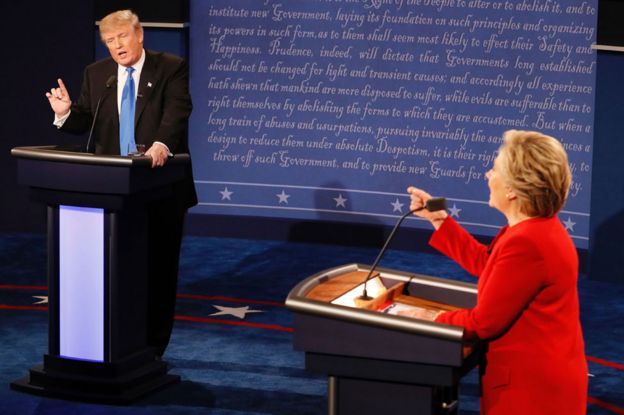
Few people openly admit to holding racist beliefs but many psychologists claim most of us are nonetheless unintentionally racist. We hold, what are called "implicit biases". So what is implicit bias, how is it measured and what, if anything, can be done about it? .
The Implicit Association Test (IAT), is a way to identify implicit bias. And not just race bias, but also, for example, bias against gay, disabled or obese people.
For those who've never taken an IAT, it works a bit like this - using the race IAT as an example. You're shown words and faces. The words may be positive ones ("terrific", "friendship", "joyous", "celebrate") or negative ("pain", "despise", "dirty", "disaster"). In one part of the process you have to press a key whenever you see either a black face or a bad word, and press another key when you see either a white face or a good word. Then it switches round: one key for a black face and good words. Another for white faces and bad words. That's a lot to keep in your head. And here's the rub. You've got to hit the appropriate key as fast as possible. The computer measures your speed.
The idea behind the IAT is that some categories and concepts may be more closely linked in our minds than others. We may find it easier, and therefore quicker, to link black faces with nasty words than white faces with nasty words.

You can take the test here
Suppose the data from your IAT test suggests a slight automatic preference for white people over black people. Are you a racist? A bigot? That would probably be at odds with your self-image. But it is cause for re-self-examination.
But implicit bias - bias that we harbour unintentionally - is much stickier, much more difficult to eradicate. At least that's the claim. The IAT, first introduced two decades ago as a means of measuring implicit bias, is now used in laboratories all across the world. From Harvard's Project Implicit site alone, it has been taken nearly 18 million times. And there's a pattern. On the race test, most people show some kind of pro-white, anti-black bias. They are speedier connecting black faces to bad concepts than white faces. Black people are not immune to this phenomenon themselves. They have implicit bias also. Tests show anti-white results.
Implicit bias has been used to explain, at least partially, everything from the election of President Donald Trump (implicit bias against his female opponent) and the disproportionate number of unarmed black men who are shot in the US by police. The notion that many of us suffer from various forms of implicit bias has become so commonplace that it was even mentioned by Hillary Clinton in one of her presidential debates with Trump. "I think implicit bias is a problem for everyone," she said.

Trump responded a week later. "In our debate this week she accuses the entire country - essentially suggesting that everyone - including our police - are basically racist and prejudiced. It's a bad thing she said."
Indeed, it's hard to think of an experiment in social psychology which has had such far-reaching impact. Some of the test's success is because it provides an explanation for why exclusion and discrimination persist. It doesn't attribute ill-will or animosity to the people who have implicit bias because, for the most part, these people are not conscious they have it.
Over the past decade or so, it's become routine for major companies to use implicit association tests in their diversity training. The aim is to demonstrate to staff, particularly those with the power to recruit and promote, that unbeknown to them, and despite their best intentions, they may nonetheless be prejudiced. The diversity training sector is estimated to be worth $8bn each year in the US alone.
There's an obvious business case for eliminating bias. If you can stop your staff behaving irrationally and prejudicially, you can employ and advance the best talent. Implicit bias down = profits up.
All races, nationalities and religions have a form of implicit bias to people who are different from themselves. It seems to exist just a fraction below conscious thought and expresses itself as a slightly uncomfortable feeling you may not want to try and identify.
No comments:
Post a Comment
Through this ever open gate
None come too early
None too late
Thanks for dropping in ... the PICs